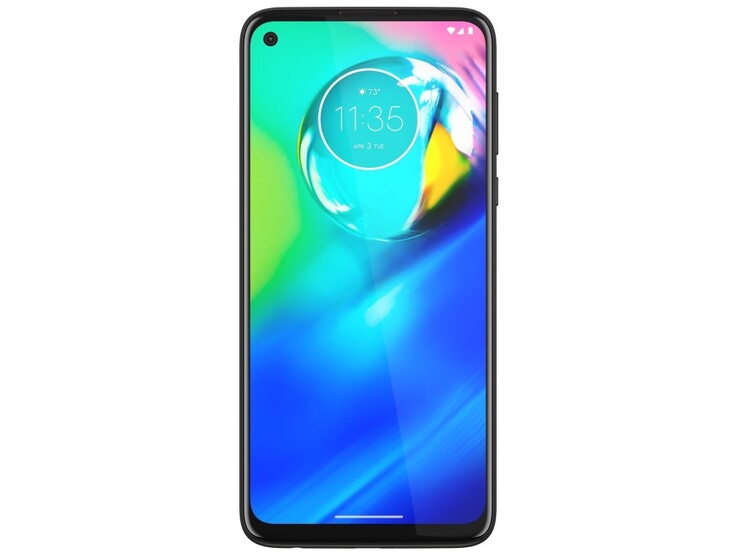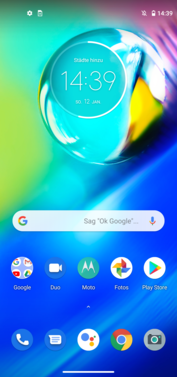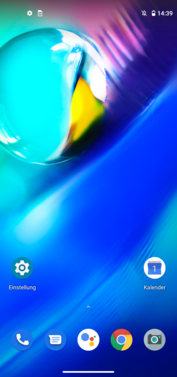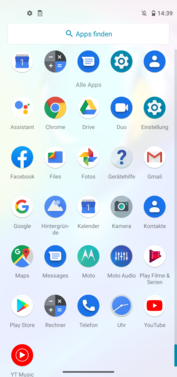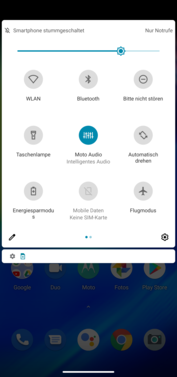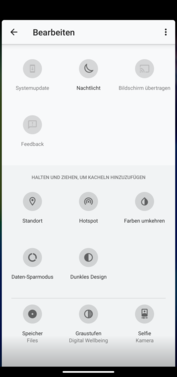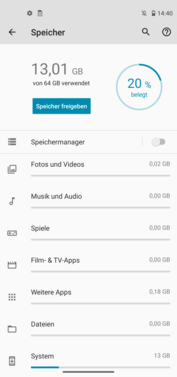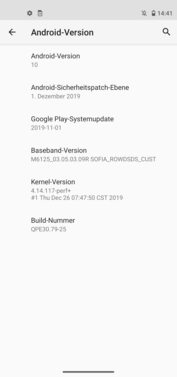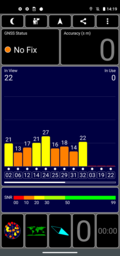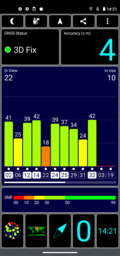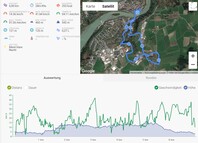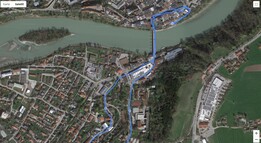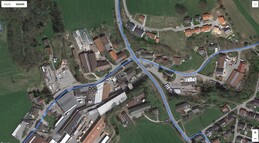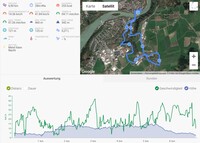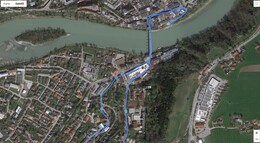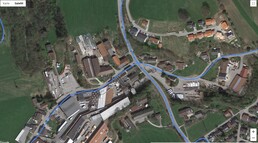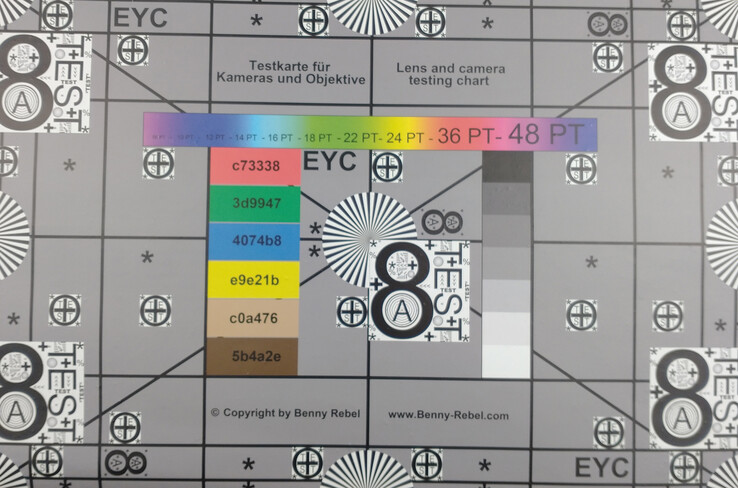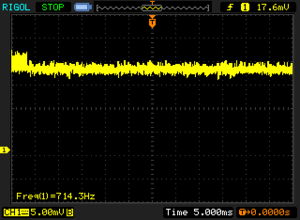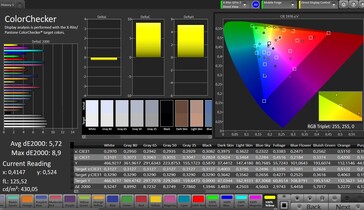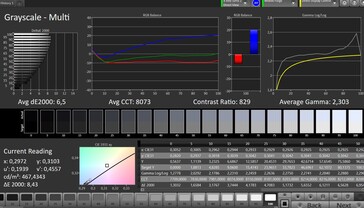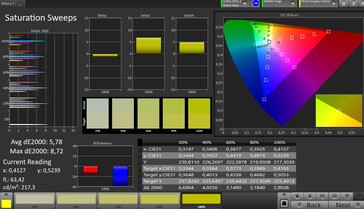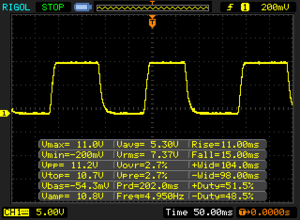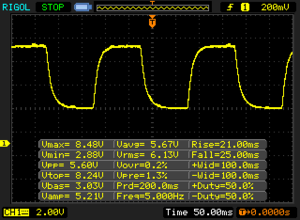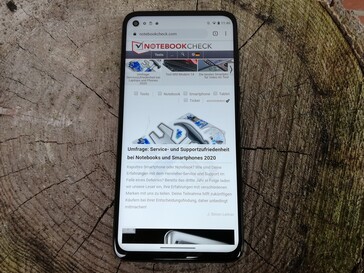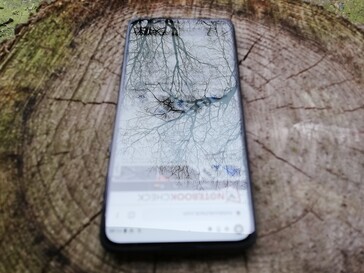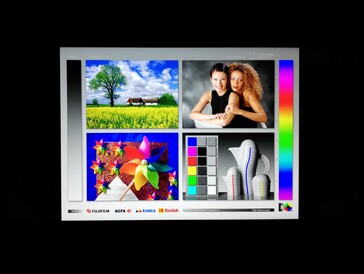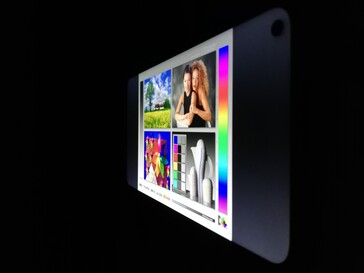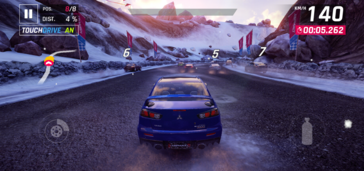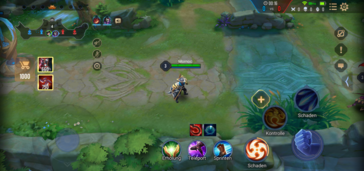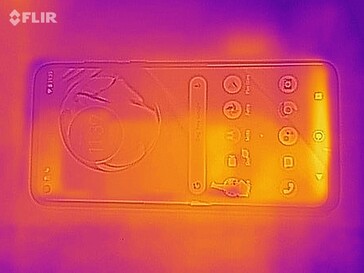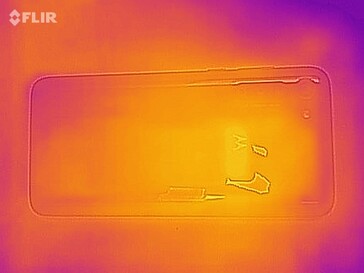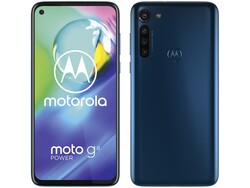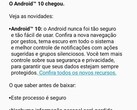Motorola Moto G8 Power Smartphone Review: Plenty of battery life and good cameras
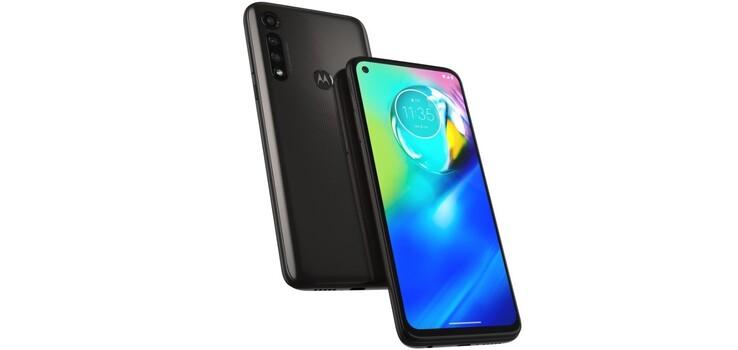
At the beginning of 2019, the Motorola Moto G7 Power convinced us with its excellent price-performance ratio and long battery life. Now, Motorola has released a successor, the Moto G8 Power, which follows in its predecessor's footsteps and has been thoughtfully improved in almost every area. In short, the hardware in the Moto G8 Power offers a lot of performance for a price of 230 Euros (~$249). We shall compare the device against other comparably priced smartphones, an overview of which we have provided below. Other smartphones from our database can be added in the benchmark and comparison tables, too.
Comparison Devices
Rating | Date | Model | Weight | Drive | Size | Resolution | Price |
|---|---|---|---|---|---|---|---|
| 78.1 % v7 (old) | 03 / 2020 | Motorola Moto G8 Power SD 665, Adreno 610 | 197 g | 64 GB eMMC Flash | 6.40" | 2300x1080 | |
| 80.6 % v7 (old) | 03 / 2020 | Sharp Aquos V SD 835, Adreno 540 | 173 g | 64 GB UFS 2.0 Flash | 5.90" | 2160x1080 | |
| 77.6 % v7 (old) | 01 / 2020 | Nokia 6.2 SD 636, Adreno 509 | 180 g | 64 GB eMMC Flash | 6.30" | 2340x1080 | |
| 78.4 % v7 (old) | 09 / 2019 | Xiaomi Mi A3 SD 665, Adreno 610 | 173.8 g | 64 GB UFS 2.1 Flash | 6.09" | 1560x720 | |
| 80.2 % v7 (old) | 01 / 2020 | TCL Plex SD 675, Adreno 612 | 192 g | 128 GB UFS 2.0 Flash | 6.53" | 2340x1080 |
Case - A rainproof smartphone
Motorola has equipped the Moto G8 Power with a metal frame and a plastic back panel. According to the manufacturer, the device is water-repellent, protecting the smartphone against light rain and water splashes. The Moto G8 Power is available in blue or black, although the device has a rather simple design in our opinion. It is worth noting that the device is comparatively thick at 10 mm. It is also heavier than all our comparison devices with a weight of 197 g.
Connectivity - Dual-SIM, microSD card expansion and a headphone jack
Motorola aims the Moto G8 Power at people with moderate demands from their smartphones. Everyday apps like WhatsApp will run perfectly well, as will media content from Netflix and YouTube. The device can also stream DRM-protected content from Netflix and Amazon Prime in Full HD thanks to Widevine L1 certification. The Moto G8 Power also has 64 GB of internal storage, which can be expanded with up to 512-GB microSD cards. The device has dual-SIM capabilities too, although the inclusion of a hybrid SIM slot means that one must choose between microSD card expansion and using a second SIM card. Both card slots support LTE, though.
There is also a USB Type-C port on board that operates at the USB 2.0 standard. Additionally, Motorola has included a 3.5 mm jack for connecting external speakers and headphone. There is no notification LED, though.
Software - A pure Android experience
Android 10 comes as standard with the Moto G8 Power, while our review unit arrived with the December 1, 2019 security patch installed. Motorola only preinstalls the Moto app on top of the standard suite of Google apps, which provides various tips and information about the device.
Communication & GPS - Wi-Fi, but only Wi-Fi 4
The Moto G8 Power can establish cellular connections using GSM, 3G and LTE. When downloading data, the device can operate on LTE Cat.13 at up to 400 Mb/s. By contrast, the Moto G8 Power uses LTE Cat.5 for uploads, which can be sent at up to 75 Mb/s.
While there is no NFC on board, the Moto G8 Power supports Bluetooth 5.0 and up to 802.11n Wi-Fi, also known as Wi-Fi 4. In our Wi-Fi tests, our review unit performed as expected with our Netgear Nighthawk AX12 reference router. However, these speeds are also slower than all our comparison devices.
| Networking | |
| iperf3 transmit AX12 | |
| Sharp Aquos V | |
| TCL Plex | |
| Nokia 6.2 | |
| Xiaomi Mi A3 | |
| Motorola Moto G8 Power | |
| iperf3 receive AX12 | |
| Sharp Aquos V | |
| TCL Plex | |
| Nokia 6.2 | |
| Xiaomi Mi A3 | |
| Motorola Moto G8 Power | |
The Moto G8 Power uses GPS, Glonass and Galileo for location services. Our review unit achieves a location accuracy of up to four metres outdoors. It cannot find us indoors, though.
On our mandatory bike ride, the Moto G8 Power's GPS accuracy proved similar to that of the Garmin Edge 520, one of our reference bike computers. In short, the Moto G8 Power is well suited for general navigation tasks.
Telephone Functions & Call Quality - Good connection with the Motorola Moto G8 Power
The Moto G8 Power reproduced voices well during our test calls, with speech transmitted clearly and understandably. The device reliably filtered out background noise too, allowing our call partner to hear us even from loud environments.
Cameras - An affordable smartphone that takes good photos
The main camera of the Moto G8 Power can shoot in up to 16 MP using an ƒ/1.7 aperture and a pixel width of 1.12 µm. There is also a 2 MP macro lens, an 8 MP ultra-wide-angle lens and an 8 MP telephoto lens with 2x optical zoom. Motorola has included a 16 MP front-facing camera too that has an ƒ/2.0 aperture and 1 µm wide pixels. Portrait pictures taken with the latter are detailed and reproduce fine structures well. Likewise, colours are vivid, although red tones are a little too full for our liking. In addition to a beautification mode, Motorola has included options manually setting the ISO value, exposure levels, white balance and shutter speeds.
The main camera takes appealing-looking photos, too. Colours are vibrant and objects remain detailed even at a distance, albeit with some slight blurriness at higher zoom levels. Homogenously coloured areas are afflicted by some slight noise too, but this is only visible when zooming in closely. Macro shots look sharp and vivid though, while object edges remained clearly delimited from each other.
The Moto G8 Power performed surprisingly well under low-light conditions too, as scene 3 below demonstrates. Colours are accurate, although the overall image looks a little blurry. Incidentally, the default camera app offers the same customisation options for the front-facing camera as it does for the rear-facing ones. Images can also be saved in RAW format, which we may have seen referred to elsewhere as DNG.
Our test videos look about as good as photos do, while the main camera sensor is able to react quickly to different lighting conditions. While the Motorola allows people to deactivate the device's image stabiliser, the only other options for tweaking videos are adjusting the resolution and the image format in which video recordings are saved.
We also subjected the main camera to further tests under controlled lighting conditions. ColorChecker Passport, for instance, shows that the Moto G8 Power overexposes most colours. Correspondingly, our test chart looks a little pale. The chart looks a bit out of focus at the edges of our test shot, too.

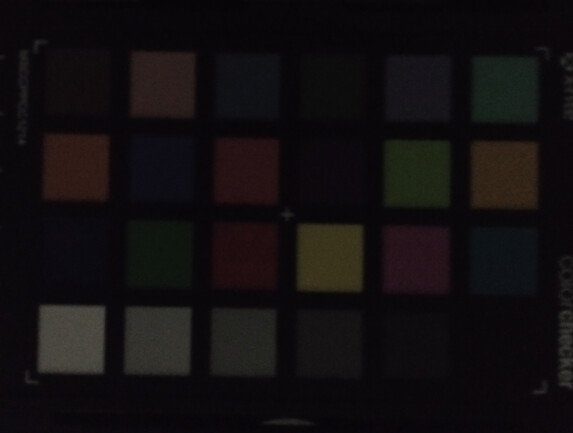
Accessories & Warranty - Motorola includes a case in the box, too
The Moto G8 Power comes with the usual set of accessories like a USB charger, a Type-C cable and a SIM tool. Motorola also includes a case in the box and sells compatible smartphone accessories on its website.
Additionally, the Moto G8 Power comes with 24-months' warranty. Please see our Guarantees, Return Policies & Warranties FAQ for country-specific information.
Input Devices & Operation - The Moto G8 Power has a fast fingerprint sensor
The Moto G8 Power uses Google Gboard as the default keyboard app, which works just as well as it does on other devices that we have tested. Likewise, the touchscreen in our review unit responds accurately to inputs and without any delays. The device's vibration motor is rather weak though, in our opinion. You should have no issues with performing drag-and-drop movements, as the display's smooth finish makes it easy to perform such gestures. Motorola has integrated multiple gestures too, which can be accessed from the Moto app.
Additionally, Motorola has included a fingerprint scanner. The company has positioned the scanner on the back of the device. The one in our review unit worked reliably during our tests.
Display - Low contrast but bright
The Moto G8 Power has a 6.4-inch IPS panel that operates natively at 2300x1080 pixels. Our review unit achieved an average maximum brightness of 483 cd/m² during our tests, putting it in the middle of our test field. The brightest area of the display reached 495 cd/m² though, while the more practical APL50 test recorded an average maximum luminosity of 478 cd/m².
The display also uses pulse-width modulation (PWM) to regulate luminosity at less than 15% brightness. The display in our review unit flickers at 714.3 Hz below this threshold, which is low enough to cause health problems for those who are PWM sensitive. It is worth keeping in mind that this only occurs at below 15% though, so it may not have much of an effect in daily use depending on your habits.
| |||||||||||||||||||||||||
Brightness Distribution: 93 %
Center on Battery: 462 cd/m²
Contrast: 711:1 (Black: 0.65 cd/m²)
ΔE ColorChecker Calman: 5.7 | ∀{0.5-29.43 Ø4.78}
ΔE Greyscale Calman: 6.5 | ∀{0.09-98 Ø5}
92.1% sRGB (Calman 2D)
Gamma: 2.303
CCT: 8073 K
| Motorola Moto G8 Power IPS, 2300x1080, 6.4" | Sharp Aquos V IPS, 2160x1080, 5.9" | Nokia 6.2 IPS, 2340x1080, 6.3" | Xiaomi Mi A3 AMOLED, 1560x720, 6.1" | TCL Plex IPS, 2340x1080, 6.5" | |
|---|---|---|---|---|---|
| Screen | 15% | 25% | -15% | 21% | |
| Brightness middle (cd/m²) | 462 | 507 10% | 611 32% | 348 -25% | 432 -6% |
| Brightness (cd/m²) | 483 | 486 1% | 582 20% | 355 -27% | 418 -13% |
| Brightness Distribution (%) | 93 | 91 -2% | 91 -2% | 91 -2% | 93 0% |
| Black Level * (cd/m²) | 0.65 | 0.55 15% | 0.4 38% | 0.43 34% | |
| Contrast (:1) | 711 | 922 30% | 1528 115% | 1005 41% | |
| Colorchecker dE 2000 * | 5.7 | 4.43 22% | 5.2 9% | 5.86 -3% | 3.4 40% |
| Colorchecker dE 2000 max. * | 8.9 | 7.13 20% | 10.2 -15% | 15.6 -75% | 6 33% |
| Greyscale dE 2000 * | 6.5 | 5 23% | 6.1 6% | 3.6 45% | 3.8 42% |
| Gamma | 2.303 96% | 2.18 101% | 2.21 100% | 2.232 99% | 2.14 103% |
| CCT | 8073 81% | 7739 84% | 8100 80% | 7051 92% | 6151 106% |
* ... smaller is better
Screen Flickering / PWM (Pulse-Width Modulation)
| Screen flickering / PWM detected | 714 Hz | ||
| ≤ 15 cd/m² brightness | |||
The display backlight flickers at 714 Hz (worst case, e.g., utilizing PWM) Flickering detected at a brightness setting of 15 cd/m² and below. There should be no flickering or PWM above this brightness setting. The frequency of 714 Hz is quite high, so most users sensitive to PWM should not notice any flickering. As the flickering occurs only on very low brightness settings, it should not be an issue in typical office settings. Nonetheless, use in low light conditions may be straining to the eyes. In comparison: 53 % of all tested devices do not use PWM to dim the display. If PWM was detected, an average of 8111 (minimum: 5 - maximum: 343500) Hz was measured. | |||
Our measurements confirm that the Moto G8 Power has a 711:1 contrast ratio, a disappointingly low value, and it has a rather high black value of 0.65 cd/m². As a result, the display struggles to delineate colours, while blacks have a grey veil to them.
Additionally, CalMAN analysis shows that the display reproduces colours with an overly blue tint. This can be mitigated somewhat by using the built-in night-light mode, though. Motorola has also integrated three pre-defined colour saturation levels should you wish to further tinker with the display.
Display Response Times
| ↔ Response Time Black to White | ||
|---|---|---|
| 26 ms ... rise ↗ and fall ↘ combined | ↗ 11 ms rise | |
| ↘ 15 ms fall | ||
| The screen shows relatively slow response rates in our tests and may be too slow for gamers. In comparison, all tested devices range from 0.1 (minimum) to 240 (maximum) ms. » 61 % of all devices are better. This means that the measured response time is worse than the average of all tested devices (20.2 ms). | ||
| ↔ Response Time 50% Grey to 80% Grey | ||
| 46 ms ... rise ↗ and fall ↘ combined | ↗ 21 ms rise | |
| ↘ 25 ms fall | ||
| The screen shows slow response rates in our tests and will be unsatisfactory for gamers. In comparison, all tested devices range from 0.165 (minimum) to 636 (maximum) ms. » 78 % of all devices are better. This means that the measured response time is worse than the average of all tested devices (31.6 ms). | ||
Performance - Moto G8 Power is suitable for everyday use
Motorola has designed the Moto G8 Power for people who have moderate demands from their smartphones. Browsing the web or using WhatsApp will not prove a problem nor will similarly tasking apps or games. Our review unit ranks in the middle of our test field in the system performance benchmarks, for instance. Only the Sharp Aquos V pulls away from the Moto G8 Power in graphics benchmarks, too.
| PCMark for Android | |
| Work performance score (sort by value) | |
| Motorola Moto G8 Power | |
| Sharp Aquos V | |
| Nokia 6.2 | |
| Xiaomi Mi A3 | |
| Average Qualcomm Snapdragon 665 (7437 - 9051, n=10) | |
| Work 2.0 performance score (sort by value) | |
| Motorola Moto G8 Power | |
| Sharp Aquos V | |
| Nokia 6.2 | |
| Xiaomi Mi A3 | |
| TCL Plex | |
| Average Qualcomm Snapdragon 665 (6189 - 11432, n=12) | |
| GFXBench (DX / GLBenchmark) 2.7 | |
| T-Rex Onscreen (sort by value) | |
| Motorola Moto G8 Power | |
| Nokia 6.2 | |
| Xiaomi Mi A3 | |
| Average Qualcomm Snapdragon 665 (30 - 52, n=10) | |
| Average of class Smartphone (12 - 166, n=157, last 2 years) | |
| 1920x1080 T-Rex Offscreen (sort by value) | |
| Motorola Moto G8 Power | |
| Nokia 6.2 | |
| Xiaomi Mi A3 | |
| Average Qualcomm Snapdragon 665 (35 - 37, n=10) | |
| Average of class Smartphone (22 - 954, n=157, last 2 years) | |
| GFXBench 3.0 | |
| on screen Manhattan Onscreen OGL (sort by value) | |
| Motorola Moto G8 Power | |
| Nokia 6.2 | |
| Xiaomi Mi A3 | |
| Average Qualcomm Snapdragon 665 (15 - 34, n=10) | |
| Average of class Smartphone (18 - 166, n=159, last 2 years) | |
| 1920x1080 1080p Manhattan Offscreen (sort by value) | |
| Motorola Moto G8 Power | |
| Nokia 6.2 | |
| Xiaomi Mi A3 | |
| Average Qualcomm Snapdragon 665 (19 - 20, n=10) | |
| Average of class Smartphone (12 - 606, n=157, last 2 years) | |
| GFXBench 3.1 | |
| on screen Manhattan ES 3.1 Onscreen (sort by value) | |
| Motorola Moto G8 Power | |
| Nokia 6.2 | |
| Xiaomi Mi A3 | |
| Average Qualcomm Snapdragon 665 (10 - 27, n=10) | |
| Average of class Smartphone (11 - 166, n=158, last 2 years) | |
| 1920x1080 Manhattan ES 3.1 Offscreen (sort by value) | |
| Motorola Moto G8 Power | |
| Nokia 6.2 | |
| Xiaomi Mi A3 | |
| Average Qualcomm Snapdragon 665 (13 - 13, n=10) | |
| Average of class Smartphone (8.4 - 413, n=158, last 2 years) | |
| AnTuTu v8 - Total Score (sort by value) | |
| Motorola Moto G8 Power | |
| Nokia 6.2 | |
| Average Qualcomm Snapdragon 665 (167305 - 181432, n=9) | |
Browser performance is also in the average range for a device at this price. Websites load and can be navigated smoothly. Media content loads a short time after websites do, though.
| JetStream 1.1 - Total Score | |
| Xiaomi Mi A3 (Chrome 76) | |
| Motorola Moto G8 Power (Chrome 80) | |
| Average Qualcomm Snapdragon 665 (33.4 - 51, n=8) | |
| Nokia 6.2 (Chrome 79) | |
| WebXPRT 3 - Overall | |
| Average of class Smartphone (38 - 380, n=35, last 2 years) | |
| Xiaomi Mi A3 (Chrome 76) | |
| Motorola Moto G8 Power (Chrome 80) | |
| Average Qualcomm Snapdragon 665 (38 - 58, n=9) | |
| Nokia 6.2 (Chrome 79) | |
| Octane V2 - Total Score | |
| Average of class Smartphone (2228 - 121337, n=201, last 2 years) | |
| Xiaomi Mi A3 (Chrome 76) | |
| Average Qualcomm Snapdragon 665 (6133 - 9671, n=9) | |
| Nokia 6.2 (Chrome 79) | |
| Motorola Moto G8 Power (Chrome 80) | |
| Mozilla Kraken 1.1 - Total | |
| Nokia 6.2 (Chrome 79) | |
| Average Qualcomm Snapdragon 665 (4434 - 6719, n=9) | |
| Motorola Moto G8 Power (Chrome 80) | |
| Xiaomi Mi A3 (Chrome 76) | |
| Average of class Smartphone (257 - 28190, n=156, last 2 years) | |
* ... smaller is better
The eMMC flash storage in the Moto G8 Power is considerably slower than the storage in most of our comparison devices. Also, our review unit's microSD card reader could only manage below average values with our Toshiba Exceria Pro M501 reference card.
| Motorola Moto G8 Power | Sharp Aquos V | Nokia 6.2 | Xiaomi Mi A3 | TCL Plex | Average 64 GB eMMC Flash | Average of class Smartphone | |
|---|---|---|---|---|---|---|---|
| AndroBench 3-5 | 40% | -4% | 29% | 38% | -9% | 528% | |
| Sequential Read 256KB (MB/s) | 300.9 | 651 116% | 296.8 -1% | 502 67% | 522 73% | 277 ? -8% | 2223 ? 639% |
| Sequential Write 256KB (MB/s) | 181.9 | 206.2 13% | 158.5 -13% | 184 1% | 199.7 10% | 178.4 ? -2% | 1838 ? 910% |
| Random Read 4KB (MB/s) | 57.7 | 157.2 172% | 78.8 37% | 126.9 120% | 130.8 127% | 60.7 ? 5% | 295 ? 411% |
| Random Write 4KB (MB/s) | 132.6 | 16.8 -87% | 14.88 -89% | 117.4 -11% | 130.1 -2% | 33.8 ? -75% | 335 ? 153% |
| Sequential Read 256KB SDCard (MB/s) | 69.4 ? | 78.5 ? 13% | 83.4 ? 20% | 67.8 ? -2% | 74.9 ? 8% | 77.4 ? 12% | |
| Sequential Write 256KB SDCard (MB/s) | 49.7 ? | 54.5 ? 10% | 61.5 ? 24% | 50.1 ? 1% | 56.2 ? 13% | 58.3 ? 17% |
Games - Suitable for gaming at reduced graphics
Emissions - Usable speakers and manageable temperatures
Temperature
In our tests, surface temperatures peaked at just over 41 °C in some areas, with the hottest area measuring 41.6 °C. The Moto G8 Power feels a bit warm at these temperatures, but we did not observe any performance restrictions or anything that could be considered thermal throttling.
(±) The maximum temperature on the upper side is 41.5 °C / 107 F, compared to the average of 35.2 °C / 95 F, ranging from 21.9 to 247 °C for the class Smartphone.
(±) The bottom heats up to a maximum of 41.6 °C / 107 F, compared to the average of 34 °C / 93 F
(+) In idle usage, the average temperature for the upper side is 24.6 °C / 76 F, compared to the device average of 32.9 °C / 91 F.
Speakers
The speakers in the Moto G8 Power get pleasantly loud and are good enough for consuming media content thanks to their relatively wide soundstage. We would still recommend using external speakers or headphones where possible though as these will offer a better listening experience in the long run. These can be connected via the device's 3.5 mm jack or Bluetooth.
Motorola Moto G8 Power audio analysis
(+) | speakers can play relatively loud (85.1 dB)
Bass 100 - 315 Hz
(-) | nearly no bass - on average 73.8% lower than median
(+) | bass is linear (0% delta to prev. frequency)
Mids 400 - 2000 Hz
(-) | nearly no mids - on average 73.8% lower than median
(+) | mids are linear (0% delta to prev. frequency)
Highs 2 - 16 kHz
(-) | nearly no highs - on average 73.8% lower than median
(+) | highs are linear (0% delta to prev. frequency)
Overall 100 - 16.000 Hz
(-) | overall sound is not linear (125.7% difference to median)
Compared to same class
» 96% of all tested devices in this class were better, 3% similar, 1% worse
» The best had a delta of 11%, average was 35%, worst was 134%
Compared to all devices tested
» 99% of all tested devices were better, 1% similar, 0% worse
» The best had a delta of 4%, average was 24%, worst was 134%
Nokia 6.2 audio analysis
(+) | speakers can play relatively loud (83.9 dB)
Bass 100 - 315 Hz
(-) | nearly no bass - on average 29.5% lower than median
(±) | linearity of bass is average (8.9% delta to prev. frequency)
Mids 400 - 2000 Hz
(±) | higher mids - on average 7.6% higher than median
(±) | linearity of mids is average (9.5% delta to prev. frequency)
Highs 2 - 16 kHz
(±) | higher highs - on average 9.2% higher than median
(±) | linearity of highs is average (7.9% delta to prev. frequency)
Overall 100 - 16.000 Hz
(-) | overall sound is not linear (31.3% difference to median)
Compared to same class
» 80% of all tested devices in this class were better, 3% similar, 16% worse
» The best had a delta of 11%, average was 35%, worst was 134%
Compared to all devices tested
» 90% of all tested devices were better, 2% similar, 8% worse
» The best had a delta of 4%, average was 24%, worst was 134%
Power Management - Low power consumption and a large battery
Power Consumption
According to our tests, the Moto G8 Power is more efficient than all our comparison devices. Our review unit consumed between 0.9 W and 7.1 W during our time with it, making its 18 W charger more than powerful enough to always keep it charging.
| Off / Standby | |
| Idle | |
| Load |
|
Key:
min: | |
| Motorola Moto G8 Power 5000 mAh | Nokia 6.2 3500 mAh | Xiaomi Mi A3 4030 mAh | TCL Plex 3820 mAh | Average Qualcomm Snapdragon 665 | Average of class Smartphone | |
|---|---|---|---|---|---|---|
| Power Consumption | -22% | -37% | -21% | -24% | -37% | |
| Idle Minimum * (Watt) | 0.9 | 0.72 20% | 0.8 11% | 0.73 19% | 1.017 ? -13% | 0.848 ? 6% |
| Idle Average * (Watt) | 1.3 | 2.22 -71% | 2 -54% | 2.17 -67% | 1.893 ? -46% | 1.434 ? -10% |
| Idle Maximum * (Watt) | 1.6 | 2.23 -39% | 3.3 -106% | 2.23 -39% | 2.36 ? -48% | 1.618 ? -1% |
| Load Average * (Watt) | 3.2 | 3.98 -24% | 4.1 -28% | 4.56 -43% | 3.77 ? -18% | 7.01 ? -119% |
| Load Maximum * (Watt) | 7.1 | 6.86 3% | 7.7 -8% | 5.22 26% | 6.66 ? 6% | 11.3 ? -59% |
* ... smaller is better
Battery Life
The Moto G8 Power lasted for almost 17 hours in our practical Wi-Fi test. This runtime is much better than what most of our comparison devices can achieve, but that is unsurprising considering that the Moto G8 Power also has a larger battery. Only the Xiaomi Mi A3 comes close to matching the Moto G8 Power's 5,000 mAh battery capacity, although it is not that far off our review unit's runtime despite having a 4,030 mAh cell.
The Moto G8 Power takes about two hours to reach full charge with its included power supply.
| Motorola Moto G8 Power 5000 mAh | Sharp Aquos V 3160 mAh | Nokia 6.2 3500 mAh | Xiaomi Mi A3 4030 mAh | TCL Plex 3820 mAh | |
|---|---|---|---|---|---|
| Battery runtime | |||||
| WiFi v1.3 (h) | 16.7 | 12 -28% | 10.2 -39% | 16.4 -2% | 10.3 -38% |
Pros
Cons
Verdict - Good value for money
With the Moto G8 Power, users should expect a smartphone with great battery life above all else. The device cannot be criticised in this regard as it lasted well over 16 hours in our practical Wi-Fi tests. However, the Moto G8 Power offers more than just battery life. Its cameras are surprisingly good, for instance, as is its almost stock Android experience. Overall, the Moto G8 Power has a solid set of hardware for a device at this price.
The Motorola Moto G8 Power will particularly convince people with its battery life capabilities.
While the device is well built, its large battery makes it rather thick. Whether this bothers you is a matter of taste, but the device falls short of its competitors on Wi-Fi connectivity. Including support for only up to the Wi-Fi 4 standard is enough for most home networks, but it means that the Moto G8 Power is surpassed by the competition in this regard. In the end, the Motorola Moto G8 Power is a good and affordable handset, but whether its shortcomings bother you will hinge on what you value in a smartphone.
Motorola Moto G8 Power
- 03/21/2020 v7 (old)
Mike Wobker




